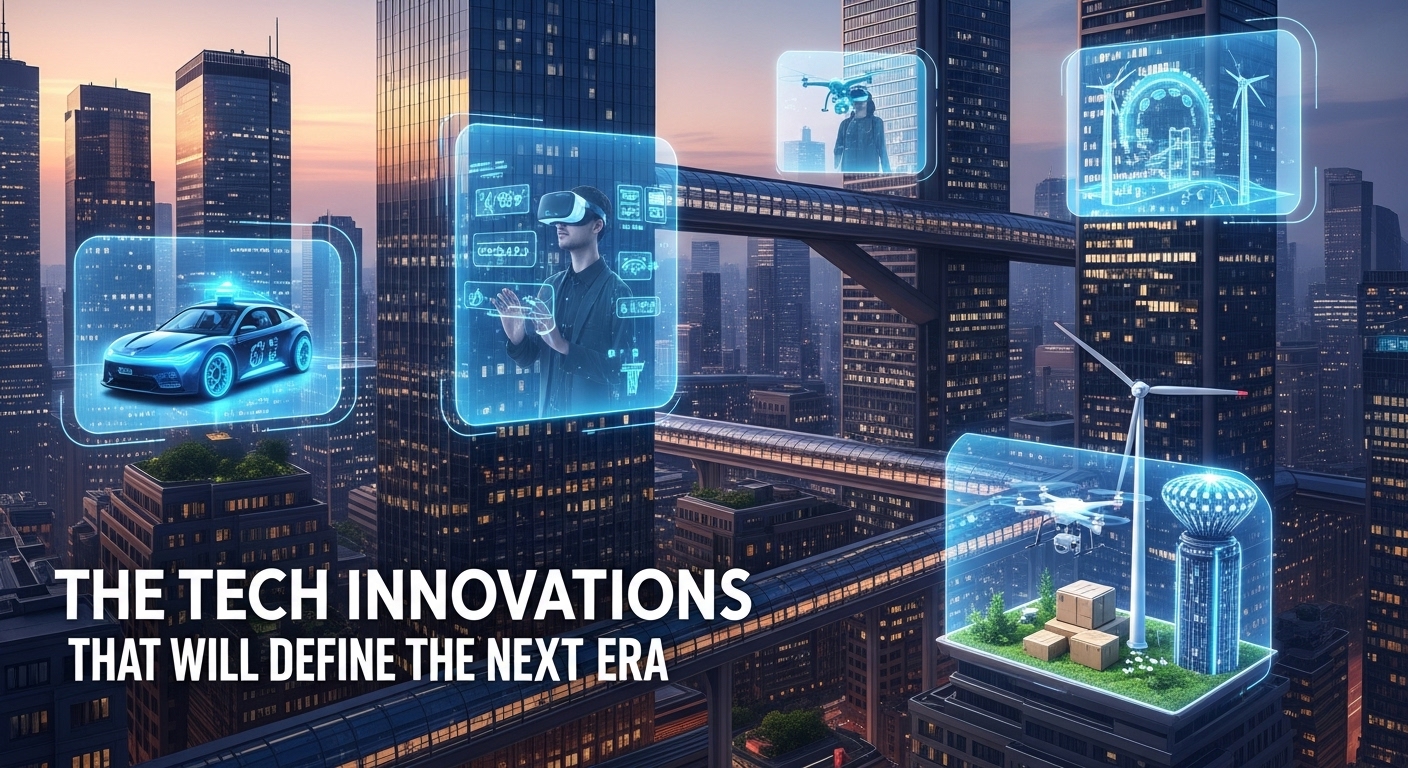Technology is the foundation of modern civilization. Every era of human history has been defined by the tools, machines, and systems people have created to solve problems and improve life. From the invention of the wheel to the rise of artificial intelligence, the story of technology is a story of evolution, innovation, and the relentless pursuit of progress. In this blog, we will explore the fascinating journey of technology — how it began, how it changed societies, and where it is leading humanity today.
The Birth of Modern Technology: The Industrial Revolution
The modern age of technology began with the Industrial Revolution in the late eighteenth century. Before this period, most human labor was manual. People worked in agriculture, small-scale crafts, and local trade. Life was simple but hard. The Industrial Revolution changed everything.
The invention of the steam engine by James Watt powered a wave of mechanization. Textile mills, railroads, and factories began to dominate cities. Production that once took days by hand could now be done in hours with machines. The concept of “mass production” was born, and with it came urbanization, new social classes, and the first signs of industrial capitalism.
Technology during this period was mechanical. It was based on gears, pistons, and steam. Yet its impact was revolutionary. For the first time in history, human beings had created machines that could perform physical labor more efficiently than humans or animals. This marked the beginning of a technological society — one that relied on invention and engineering as the engines of progress.
The Electrical Age: Powering the Modern World
The nineteenth century gave birth to the next great wave of technology: the age of electricity. Scientists like Michael Faraday, Nikola Tesla, and Thomas Edison discovered ways to harness electrical energy for practical use. Electricity transformed communication, transportation, and manufacturing.
Edison’s invention of the light bulb illuminated homes and streets, extending the productive hours of the day. Tesla’s alternating current systems powered entire cities, laying the groundwork for modern electrical grids. Meanwhile, Samuel Morse’s telegraph and Alexander Graham Bell’s telephone revolutionized communication. Information could now travel across continents in seconds rather than weeks.
Electricity became the invisible lifeblood of modern life. It made possible the rise of new industries and inventions — from electric trams to household appliances. The electrical revolution also set the stage for the technological transformations of the twentieth century, as power became not just mechanical but electronic.
The Rise of the Machine Age
As the twentieth century dawned, technology advanced at a pace never before seen. The early 1900s saw the birth of the automobile industry, pioneered by Henry Ford’s assembly line production. The Wright brothers achieved powered flight, transforming global transportation forever. Factories grew larger, machines more complex, and human ambition seemed limitless.
The Machine Age brought both prosperity and peril. It created wealth, mobility, and efficiency but also dependency on fossil fuels and industrial pollution. World War I and II demonstrated the dark side of technological progress — from tanks to nuclear bombs, technology could destroy as easily as it could build.
However, even amid global conflict, technology continued to evolve. Radar, radio communication, and early computing machines like the ENIAC paved the way for a new kind of revolution — one not based on iron and oil, but on information.
The Digital Revolution: Birth of the Computer Age
The mid-twentieth century marked the most significant turning point in human technological history — the digital revolution. It began quietly with scientists experimenting on early computers that filled entire rooms and consumed massive power. These machines were primitive by today’s standards, but they introduced a radical new concept: programmable logic.
The invention of the transistor in 1947 was a game-changer. It replaced bulky vacuum tubes, making computers smaller, faster, and more efficient. This single innovation laid the foundation for the microprocessor and the personal computer revolution that would follow decades later.
By the 1970s and 1980s, companies like IBM, Apple, and Microsoft brought computers into homes and offices. The world was entering the Information Age, where data became the new currency of power. Tasks that once required paper, typewriters, and filing cabinets could now be done with a keyboard and screen.
Computers changed how people worked, learned, and communicated. They also created entirely new industries — software development, digital entertainment, and information technology services. For the first time, knowledge could be processed, stored, and shared at unprecedented speed.
The Internet Revolution: Connecting the World
If the computer was the brain of modern technology, the internet became its nervous system. What began as a small research network in the 1960s known as ARPANET evolved into the global internet of the 1990s. The World Wide Web, introduced by Tim Berners-Lee, made it possible for anyone with a computer to access and share information across the world.
The internet transformed every aspect of life. It democratized information, connected businesses to global markets, and gave individuals a voice through blogs and social media. Email replaced letters, online news replaced newspapers, and e-commerce replaced traditional shopping.
The rise of search engines, smartphones, and social networks created an interconnected digital culture. People could communicate instantly regardless of geography. Entire generations grew up in a digital ecosystem, where information and entertainment were just a click away.
But with connectivity came new challenges. Privacy concerns, cybercrime, and misinformation emerged as serious issues. The internet, while a powerful tool for freedom and learning, also became a battlefield of ideas and data security.
The Mobile Era: Technology in Your Pocket
The early 2000s ushered in the mobile technology revolution. The smartphone, led by innovations from Apple, Samsung, and Google, transformed the way people interact with technology. What once required multiple devices — a phone, camera, map, and computer — could now fit in the palm of your hand.
Mobile technology did not just make communication easier; it redefined human behavior. The rise of mobile apps created entirely new industries — from ride-sharing to food delivery to digital banking. Social media platforms like Facebook, Instagram, and TikTok turned the smartphone into a social hub, where personal identity and digital presence became intertwined.
Mobile devices also empowered developing countries by giving millions access to the internet for the first time. In regions without traditional infrastructure, smartphones became gateways to education, healthcare, and commerce.
However, the mobile revolution also raised concerns about attention spans, mental health, and the effects of constant digital stimulation. Society was becoming more connected — but also more dependent on screens.
Cloud Computing and the Era of Big Data
As internet connectivity expanded, so did the demand for data storage and processing. Cloud computing emerged as a solution, allowing users and companies to store information remotely rather than on local devices. The concept was revolutionary — you could access your files, applications, and services from anywhere with an internet connection.
This technology transformed how businesses operated. It enabled collaboration across continents, gave rise to software-as-a-service (SaaS) models, and made startups more agile and scalable. Companies no longer needed massive physical servers; the cloud became their digital infrastructure.
Alongside cloud computing came the explosion of big data. Every online action — a click, a search, a purchase — generated data. Businesses and governments began using this data to understand behavior, predict trends, and make smarter decisions. The ability to analyze vast amounts of information quickly became a critical advantage.
Yet, the data revolution also sparked ethical debates. Who owns the data? How should it be used? And how much privacy should individuals sacrifice for convenience? These questions remain central to modern technological discussions.
Artificial Intelligence: The Age of Intelligent Machines
The twenty-first century has entered what many call the AI era. Artificial Intelligence, once a concept of science fiction, is now a core driver of innovation. AI refers to machines that can learn, reason, and make decisions like humans — though often faster and more accurately.
Machine learning, neural networks, and natural language processing have made AI applications ubiquitous. From voice assistants like Siri and Alexa to recommendation systems on streaming platforms, AI influences daily life in subtle yet powerful ways. In business, AI optimizes logistics, predicts market trends, and automates routine tasks. In healthcare, it helps detect diseases, analyze scans, and design personalized treatments.
AI also powers autonomous vehicles, robotics, and smart cities. These technologies promise greater efficiency and safety but also raise concerns about job displacement, surveillance, and ethical decision-making by machines.
Despite these challenges, the potential of AI is immense. It represents a new phase of human-machine collaboration, where technology does not just serve humans but works alongside them to solve complex global problems — from climate change to medical research.
The Rise of Automation and Robotics
Automation has always been part of technological progress, but the modern wave is different. Robots are no longer confined to factory floors; they are entering homes, hospitals, and even classrooms. Advanced robotics systems are capable of performing delicate surgeries, delivering packages, and assisting the elderly.
In industries, automation increases productivity and reduces human error. However, it also threatens traditional employment models. Routine and repetitive jobs are being replaced by machines that work faster and without fatigue. This shift demands a new kind of workforce — one skilled in programming, maintenance, and creative problem-solving.
The integration of AI and robotics is creating autonomous systems capable of learning from experience. Self-driving cars, drone delivery networks, and warehouse robots are early glimpses of an automated future. The key question now is not whether automation will dominate, but how humanity will adapt to coexist with it.
The Green Technology Movement
As technology advances, so does awareness of its environmental impact. The twenty-first century faces an urgent challenge: how to make technology sustainable. The green tech movement seeks to address this by developing renewable energy sources, reducing waste, and designing eco-friendly innovations.
Solar panels, wind turbines, and electric vehicles are reshaping the global energy landscape. Smart grids optimize power consumption, while sustainable materials reduce industrial pollution. Even in computing, efforts are underway to create energy-efficient data centers and recyclable electronics.
The concept of a circular economy — where products are designed for reuse and minimal waste — is gaining traction. Technology can play a critical role in achieving global sustainability goals if innovation is guided by responsibility and foresight.
Quantum Computing: The Next Frontier
Beyond AI and green tech lies another revolutionary frontier: quantum computing. Traditional computers process information using bits, which represent 0s or 1s. Quantum computers use qubits, which can represent both at once through a phenomenon called superposition. This allows them to perform calculations far beyond the capability of even the fastest classical computers.
Quantum computing has the potential to transform industries such as cryptography, pharmaceuticals, and materials science. It could simulate molecular interactions, optimize complex systems, and crack codes that are currently unbreakable.
Though still in its infancy, quantum technology represents the next leap in computational power. It challenges the limits of what humanity can achieve through mathematics and engineering.
The Human Side of Technology
Amid all this progress, one essential truth remains: technology is not just about machines, but about people. Every invention reflects human creativity, curiosity, and the desire to improve life. Yet it also reflects our values and priorities.
Technology can unite or divide, liberate or control. It can amplify knowledge or spread misinformation. As we move deeper into the digital and AI-driven era, the ethical dimension of technology becomes more important than ever.
Education, regulation, and awareness will play crucial roles in shaping the future. Society must ensure that technological power is used responsibly — for equality, sustainability, and collective advancement, not exploitation or division.
The Future of Technology: A Glimpse Ahead
Looking forward, the next decades promise even greater transformation. Artificial general intelligence may one day rival human cognition. Biotechnology and nanotechnology could revolutionize medicine and longevity. Virtual and augmented reality may redefine how we perceive the world itself.
Space technology, too, is advancing rapidly. Private companies are exploring space tourism, asteroid mining, and even the colonization of other planets. The dream of interplanetary life, once confined to science fiction, is slowly becoming possible.
The boundary between the physical and digital worlds continues to blur. From wearable devices to brain-computer interfaces, humans are merging more closely with their creations. The question of what it means to be human in a technologically integrated future may become the greatest philosophical question of all.
Conclusion: Technology as Humanity’s Mirror
Technology is a mirror that reflects who we are. It magnifies our intelligence, our ambition, and our flaws. From the steam engine to the supercomputer, every invention has shaped human destiny in profound ways. Yet no matter how advanced our machines become, the essence of progress remains human — the imagination that dreams of a better world and the determination to build it.
We stand today at the crossroads of possibility. The choices we make — in how we use artificial intelligence, manage data, and protect the planet — will define the next chapter of technological evolution. If guided by wisdom, empathy, and foresight, technology will continue to be humanity’s greatest ally, not its replacement.
The story of technology is far from over. In truth, it is only beginning.



